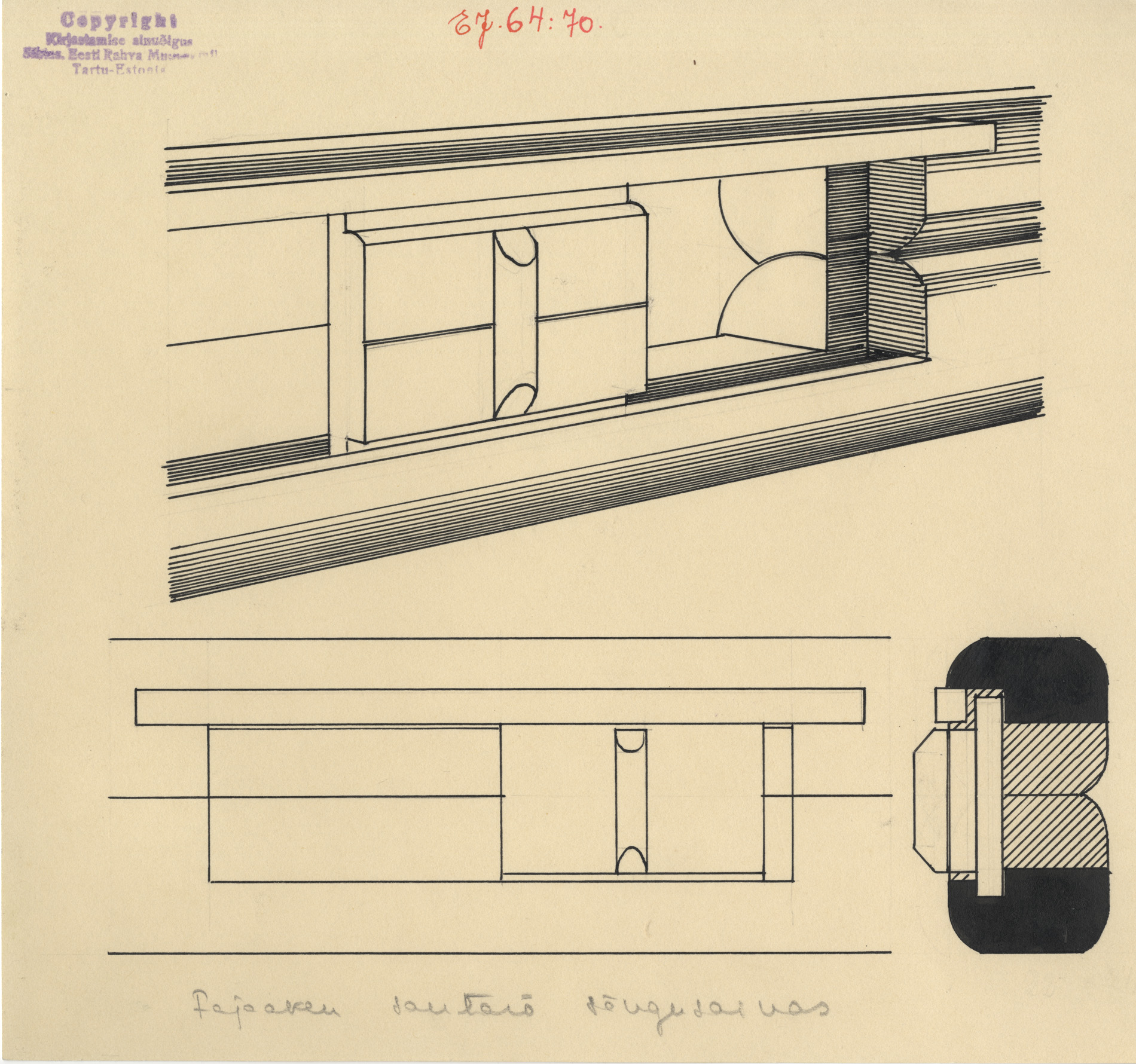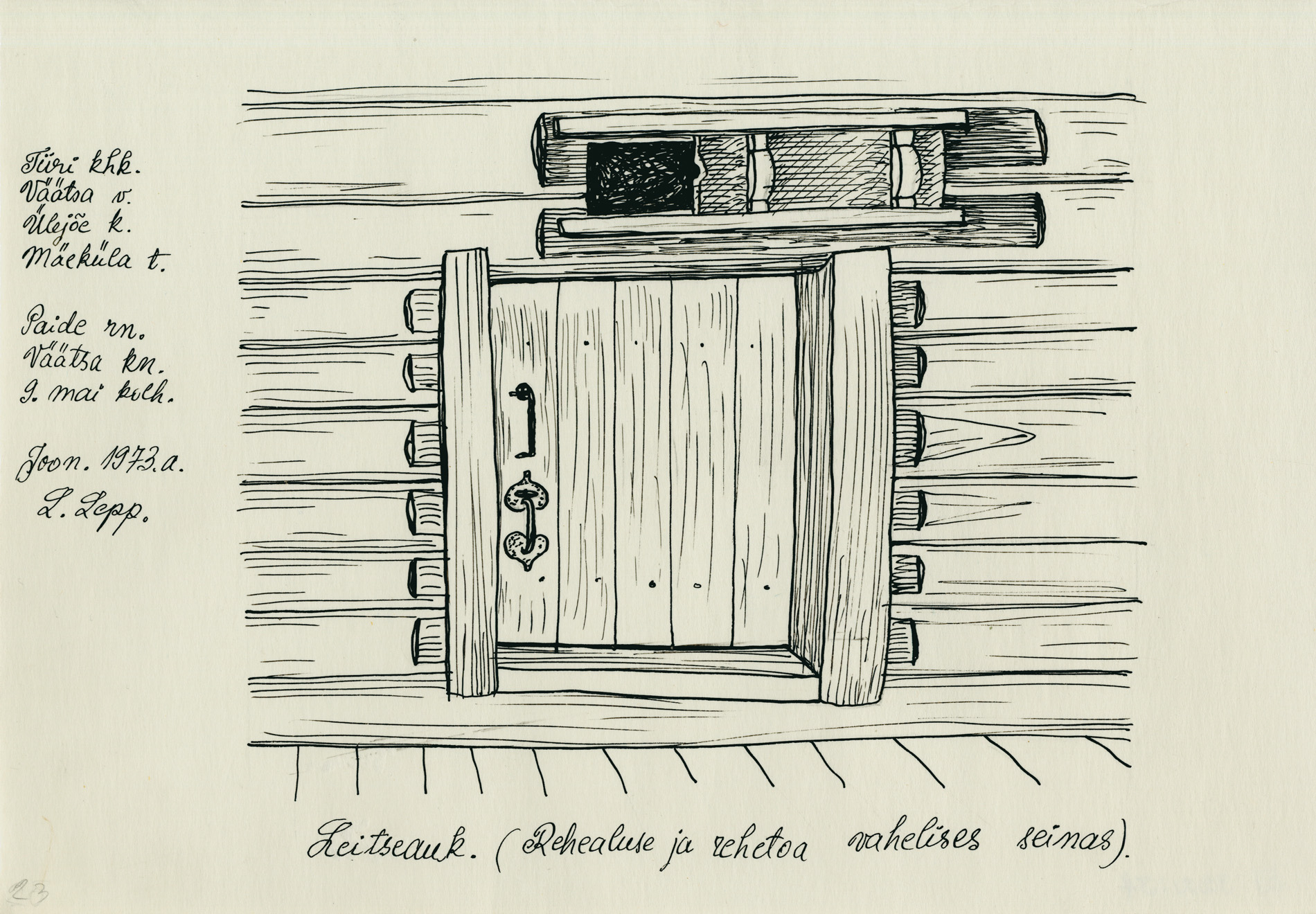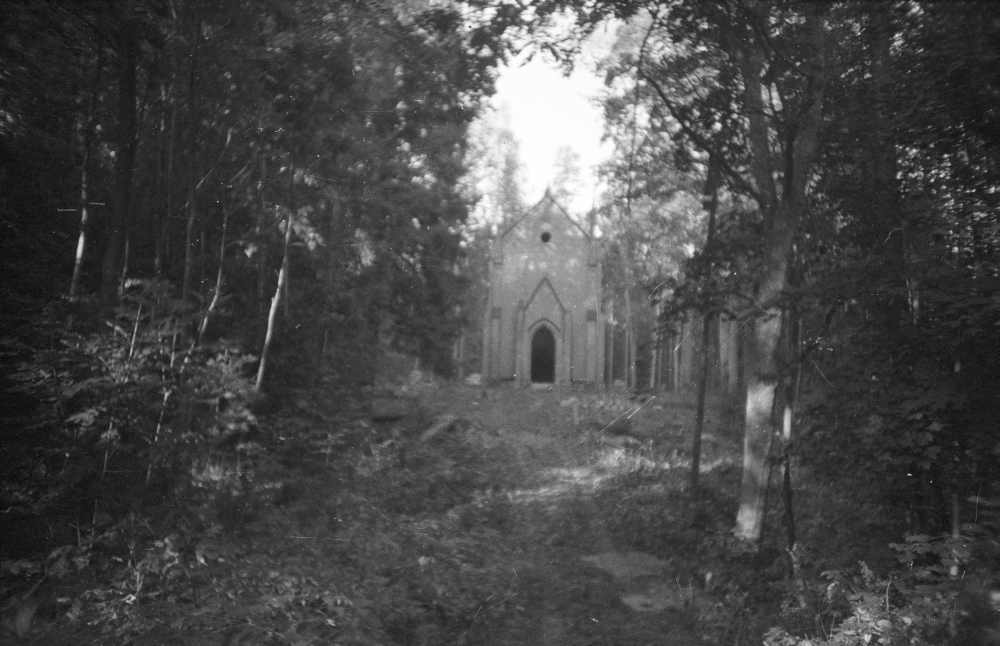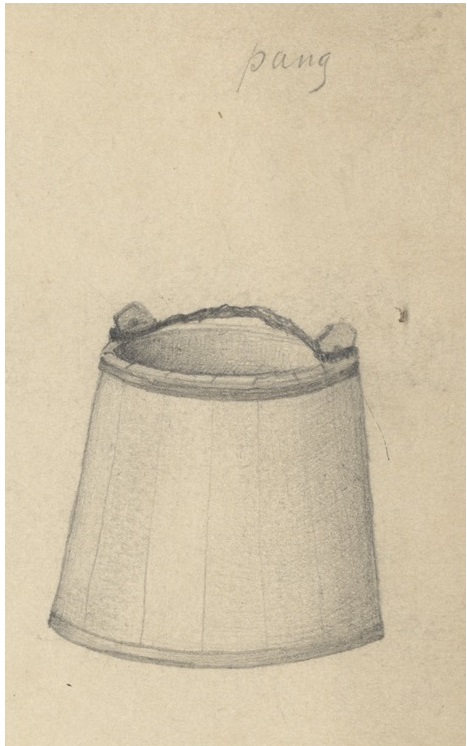Souls’ migration
According to ancient lore, a certain little grayish butterfly was said to be a person’s "soul". It would fly around that person's sickbed before death, and visit the home of the deceased as a "soul" for some time afterwards, to see their relatives and old home. This is why one must be careful that no one kills this little grayish butterfly, as it would destroy one's soul. – The action of the little "soul butterfly" is said to be most clearly seen at the time of a person's death. If someone is about to die, open the smoke hole in the wall and put a bowl of water over the hole, but stay in a secret place and watch. – Then it would be plain to see how the soul, in the form of a grayish butterfly, is in the hands of a soul-saviour (probably an angel), who takes it through the water in the bowl, thus washing it clean of all sin, then puts it in a clean white rag, and takes it to God in heaven. – In the same way the soul would go to see its own home after death, and never fly upon any filthy thing.

Vanarahva jutu järgi peetud üht hahka liblikakest "hinge-liblikaks", kes olevat inimese "hing" ja lendlevat enne inimese surma tema haigevoodi ümber, ning hiljemgi käivat kadunukese "hingena" veel mõnda aega kodus, oma sugulasi ja oma vana kodu vaatamas. Sellepärast on siis vaja hoolega tähele panna, et keegi seda väikest hahka liblikat ei tapaks, see hävitavat ühe inimese hinge. Väikse "hinge-liblika" tegevus olevat kõige selgemini näha inimese suremise ajal. Kui keegi on hinge heitmas, siis tee pajaauk lahti ja pane vesi kausiga pajaaugu peale, aga ise jää kuskile salajasse kohta vaatama. Siis olevat selgesti näha, kuidas hing haha liblika kujul hingeviija (vist ingli) käes on, kes viib ta läbi kausis oleva vee ja nõnda kõigest patust puhtaks peseb, puhta valge räti sisse paneb ja siis taevasse Jumala juurde viib. Sel kombel käivat hing ka pärast surma kodus, omakseid vaatamas, ja ta ei lendavat kunagi ühegi räpase asja peale.

This story happened in Kudima. A man was asleep and the others saw a fly come out of his mouth and fly onto the handle/stirrup of the water pail. The handle was made of rope, and it stretched out into the water, and the fly also fell into the water, floundering there. The man in the bed moved and groaned. When the fly got free, it flew back into his mouth. And the man got up and spoke: "I went across the river and the log of the canoe was in the water and there was no way I could get across and no one came to help”.
Kudima kandis juhtunud see lugu. Üks mees maganud ja teised näinud, kui üks kärbes lendas suust välja ja lendas veepangi sanga pääle ja sang olnud nöörist, ulatanud vette ja kärbes ka kukkunud vette, rabelenud seal. Mees voodis liigutas ennast ja oigas. Kui kärbes välja sai, lendas jälle suhu tagasi. Ja mees tõusnud üles ja rääkinud: “Mina läksin üle jõe ja purde palk oli vee sees ja mina kuidagi üle ei saand ja keegi appi ka ei tulnud."

There is an old Stryk1 funeral chapel in the forest of Põrgulaane – Hell’s Forest –, which replaced another older chapel, and in the days of this older chapel all the dead were buried in a cellar underneath it, and were left under its floor when the new chapel was built.
But the old wicked Läll, who tormented everyone, and whose death caused the whole manor to be full of black crows, was buried in a hole walled up like a cellar beside the chapel, and this hole or grave was also walled up afterwards, so that the wicked soul could not get out.
And they didn't even put a cross on his grave because of his evil deeds, rather they put a stone tablet on a mound made on the wall, which was carved in German such that Lällwould stand still in his grave. But he still went home and banged on the door of the manor house every night, shouting to his son to keep the manor well and to cultivate the fields hard.
Early in the morning he would sneak a peek at the grain and watch it grow. Once, the master himself, as well as the people, had seen the deceased walking along the oats, and pulling the panicles through his fingers, as if he had scutched the grain. And the master went away to live in Polli, and only his eldest son came to live in Riidaja. He had a new chapel built in place of the old one, with a cross on the top and a black angel guarding it.
But old Läll was dug out of the hole, for a new cellar-like tomb was built for him, in which he and his wife were laid. The tomb was filled with earth, and its wall was built up hard on top.
And on top of this grave they put a new German-language slab, with the prohibition of evacuation carved in deeper – and old Läll never came out of his cellar after that.
1 The funeral chapel belonged to the Baltic German von Stryk family.
Põrgulaane metsas on vana Striike matusekabel, mille asemel oli veel varem üks teine vanem kabel, ja selle vana kabeli ajal maeti kõik surnud kabeli alla keldrisse, mis uue kabeli tegemisel jäeti selle põranda alla.
Aga vana tige Läll, kes kõiki piinas ja kelle surm ajas terve mõisa musti vareseid täis, maeti kabeli kõrvale keldri moodi müüritud auku ja see auk või haud müüriti pärast ka pealt kinni, et kuri hing välja ei saaks.
Ning tema hauale ei pandud isegi mitte risti tema kurjade tegude pärast, vaid pandi müüri peale tehtud künkale saksakeelne kivitahvel, kuhu peale oli raiutud, et Läll seisku hauas paigal. Aga siiski käis ta veel kodus ja põrutas iga öösi häärberi ukse pihta ning karjus pojale, et see ta mõisat ilusti hoiaks ja põlde kõvasti hariks.
Hommikul vara luusis ta mööda vilja ja uuris, kuidas see kasvas. Ükskord oli peale rahva ka härra ise näinud, kui kooljas kõndinud kaeru pidi ja tõmmanud pööriseid läbi sõrmede, nagu oles ta teri maha roobitsenud. Ja härra läks ära Pollisse elama, ning alles tema vanem poig tulli Riidajasse elama. Tema laskiski vana kabeli asemele ehitada uue, millele rist otsa pandi ja must ingel ette valvama.
Vana Läll kaevati aga sellest august välja, sest talle müüriti uus keldri moodi haud, kuhu sisse ta koos prouaga pandi. Haud aeti mulda täis ning selle müür ehitati pealt kõvasti kinni.
Ja sellele hauale pandi veel uus saksakeelne tahvel peale, millel oli väljatuleku keeld kõvemini sisse raiutud, - ja vana Läll ei tulnudki pärast seda oma keldrist enam välja.


